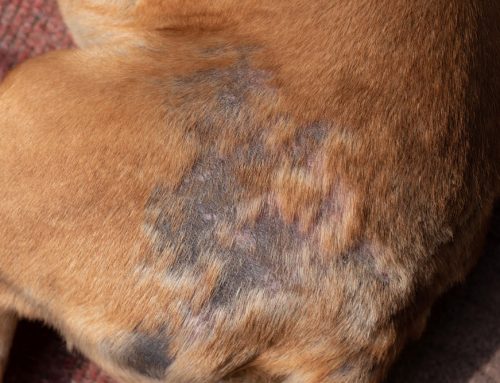Understanding Limping in Pets: A Guide for Concerned Owners
Limping is a common concern for pet owners, and causes can range from minor sprains to serious conditions needing immediate care. Recognizing when a limp is a sign of a critical issue can save your pet from further discomfort and health problems.
Recognizing the Signs of Emergency Limping
Common Causes of Limping in Pets
Pets may limp for various reasons, including:
- Injuries from slips or falls: These can range from bruises to fractures. Observe any behavioral changes following an incident.
- Joint diseases like arthritis: Common in older pets, arthritis causes chronic pain and limping. Early intervention is key.
- Infections or inflammatory diseases: Conditions like Lyme disease or septic arthritis can result in sudden and severe limping.
- Congenital abnormalities: Conditions like hip dysplasia may worsen over time.
- Overexertion or excessive play: Young or high-energy breeds may experience sprains or strains.
Understanding the root cause is crucial. More insights into pet pain can be found in this article: The Why and the “Ow:” 7 Conditions That Cause Pain in Pets.
Symptoms Requiring Immediate Veterinary Attention
Seek veterinary care immediately if your pet has:
- Complete inability to stand or walk: This may indicate severe injury or neurological issues.
- Intense whining or vocalizing when touched or moving: A sign of severe pain needing urgent care.
- Visible limb deformities, such as swelling or abnormal angles: These suggest fractures or dislocations.
- Signs of severe pain, such as shaking or withdrawal: Urgent professional intervention is necessary.
Delaying treatment can lead to complications, chronic pain, permanent damage, or loss of limb function. Keep our contact information handy in the event of an emergency, as well as the contact information for local 24/7 emergency hospitals.
First Aid Measures for Limping Pets
Safe Handling of a Limping Pet
Handle your pet gently to prevent further injury:
- Approach calmly to avoid startling them, which can exacerbate pain.
- Use a pet carrier or makeshift stretcher for larger dogs to minimize movement.
- Support the injured limb when lifting or moving your pet.
Immediate Actions Before Reaching the Vet
Before reaching a vet, consider these actions:
- Restrict your pet’s movement; confine them to a safe area to prevent further strain.
- Apply ice packs to the affected area if swelling is visible (wrap ice in a cloth to avoid direct skin contact).
- Avoid administering over-the-counter medications without veterinary consultation, as some human medications can be toxic to pets.
For emergency services, check Valley Center Veterinary Emergency Services.
Diagnosing Limping Issues at Valley Center Veterinary Clinic
What to Expect During Your Visit
Upon arrival at the clinic, our team will:
- Conduct a thorough physical examination: Checking for pain, swelling, or movement abnormalities.
- Discuss your pet’s medical history and recent activities: This helps identify potential causes and behavior patterns.
- Possibly recommend imaging tests like X-rays to diagnose the issue accurately. Advanced imaging like MRI or CT scans may be necessary.
Discover more about our diagnostic approach on the Diagnostic Services at Valley Center Veterinary Clinic page.
Advanced Diagnostics and Treatments Available
We utilize advanced diagnostic tools for accurate diagnosis and treatment, which may include:
- X-ray imaging: Essential for identifying fractures, dislocations, or advanced joint diseases.
- Ultrasound: A non-invasive diagnostic tool that uses sound waves to create images of your pet’s internal organs.
- Cold laser therapy: A non-invasive and pain-free treatment that uses a low-intensity laser to stimulate healing and reduce inflammation. This treatment is effective for a variety of conditions, including arthritis, back pain, muscle strains, and more. Learn more about this therapy on our website and with this guide to laser therapy from AAHA.
- Surgery, if necessary: Required for severe cases, such as fractures or torn ligaments, to restore function. Learn more about our surgical services here.
Preventing Future Incidents
Routine Care to Prevent Injuries
Regular veterinary check-ups and maintaining a healthy weight are essential for preventing injuries. Regular visits allow for early detection and management of potential health issues. Explore our preventative services at Wellness Services.
- Weight management: Excess weight stresses joints, contributing to conditions like arthritis.
- Regular check-ups: Facilitate early detection of potential problems, allowing for timely interventions.
Exercise and Nutrition for Joint Health
Maintaining joint health involves:
- Regular, moderate exercise tailored to your pet’s age and condition: Helps maintain muscle strength and joint flexibility.
- A balanced diet with essential nutrients: Consider joint supplements like glucosamine and chondroitin as recommended by your vet. These can aid in cartilage health and joint function.
Managing Limping at Home
- Monitor your pet’s activity levels: Ensure they rest adequately after vigorous activity to prevent overexertion-related injuries.
- Create a safe environment: Remove potential hazards around the home that could cause slips or falls.
- Consider physical therapy: Under professional guidance, physical therapy can be beneficial for pets recovering from injuries or surgery.

Your Next Steps with Valley Center Veterinary Clinic
Scheduling an Appointment or Emergency Visit
For concerns about your pet’s health or to schedule an emergency visit, please Contact Us.
Preparing for Your Visit
Bring the following:
- Your pet’s medical history: Including previous injuries or chronic conditions.
- List of medications: This helps the veterinarian avoid drug interactions.
- Dietary information: Details assist in identifying nutritional deficiencies affecting bone and joint health.
Monitoring your pet for any signs of discomfort, such as limping, and seeking timely veterinary care is crucial. At Valley Center Veterinary Clinic, we are dedicated to providing the highest level of care for your pets. Bookmark this guide for future reference and consider sharing it with other pet owners to raise awareness about addressing limping issues promptly.







Leave A Comment